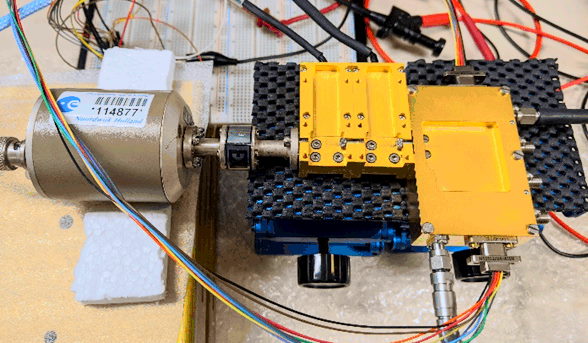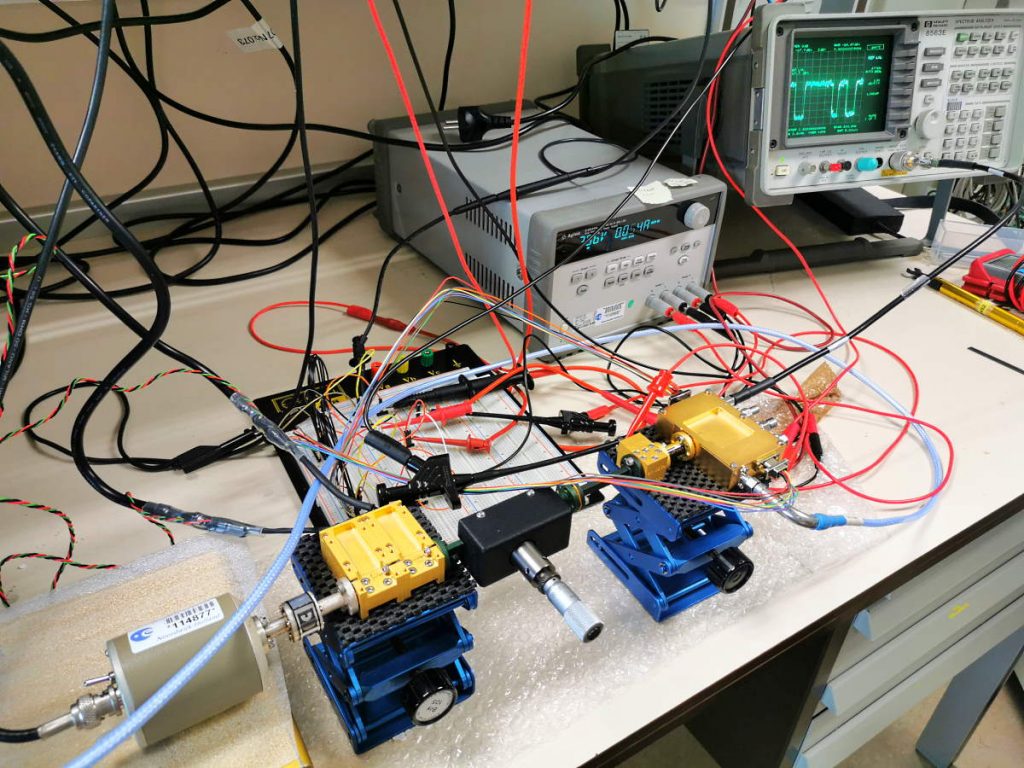
ESA’s microwave laboratory in Noordwijk (The Netherlands) uses ELVA-1 E-band ISSN-series E-band noise source in the frame of ESA R&D contracts to develop a low-noise receiver (71GHz to 76GHz).
When developing a millimeter wave receiver, a must-do task is to measure the noise figure of LNA (low noise amplifier) or the entire receive path to achieve the best possible sensitivity. The technique of low-noise receiver development utilizes a precision noise source, such as the noise diode (model ISSN-12 with WR12 flange) from ELVA-1 with a frequency range from 60 GHz to 90 GHz, to provide an excessive noise ratio (ENR) to the device under test.
Using the noise figure characterization provided ELVA-1 IMPATT noise source, a very straightforward test bench was built to achieve accurate results in the Noordwijk microwave laboratory. The ESA’s developed LNA module is based on OMMIC’s GaAs mHEMT technology and achieves state-of-art performance. The receiver waveguide unit relies on COTS MMIC
For more info about research activities in European Space Agency, ESTEC (Noordwijk, The Netherlands) please visit https://www.esa.int/About_Us/ESTEC/European_Space_Research_and_Technology_Centre_ESTEC2
For ELVA-1 calibrated noise source ISSN-XX series specifications please visit the relevant product page on our website.

